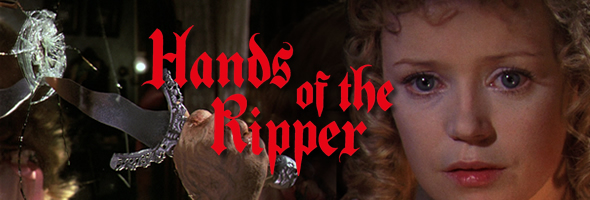
Color, 1971, 85m.
Directed by Peter Sasdy
Starring Eric Porter, Angharad Rees, Jane Merrow, Keith Bell, Dora Bryan, Derek Godfrey
Synapse (Blu-Ray & DVD) (US RA/R1 HD/NTSC) / WS (1.66:1) (16:9), Network (DVD) (UK R2 PAL) / WS (1.78:1) (16:9)
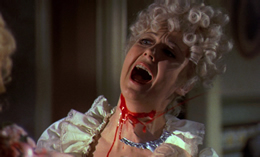
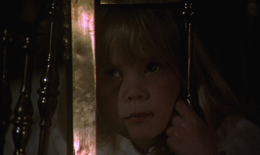 any of its horror films until 1971, but suddenly they found themselves mounting two features tied to the famous serial killer. Dr. Jekyll and Sister Hyde managed to wedge the murderer into its gimmicky gender-bending story, but Jack proved far more central to the plot of one of the studio's finest 1970s, Hands of the Ripper. Blending psychological suspense with moments of intense, shocking gore, the film posits the concept that Jack the Ripper, on the verge of being tracked down, left behind a young daughter, Anna, who's permanently scarred by the final memory of her father kissing her against flickering firelight after stabbing her mother to death.
any of its horror films until 1971, but suddenly they found themselves mounting two features tied to the famous serial killer. Dr. Jekyll and Sister Hyde managed to wedge the murderer into its gimmicky gender-bending story, but Jack proved far more central to the plot of one of the studio's finest 1970s, Hands of the Ripper. Blending psychological suspense with moments of intense, shocking gore, the film posits the concept that Jack the Ripper, on the verge of being tracked down, left behind a young daughter, Anna, who's permanently scarred by the final memory of her father kissing her against flickering firelight after stabbing her mother to death. 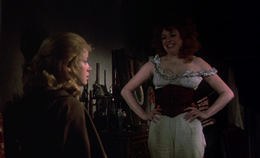 genuinely great installment in the series) and followed it with both this film and Countess Dracula the following year. The rest of his career was far more erratic, ranging from excellent fare like TV's The Stone Tape to flawed but intriguing offerings like Nothing but the Night and The Devil within Her. (He also directed The Lonely Lady, but that's another story entirely.) Beautifully shot, acted, and edited, Hands of the Ripper is easily one of his best efforts, with Christopher Gunning (who went on to the long-running Poirot TV series) supporting it with one of Hammer's all-time best
genuinely great installment in the series) and followed it with both this film and Countess Dracula the following year. The rest of his career was far more erratic, ranging from excellent fare like TV's The Stone Tape to flawed but intriguing offerings like Nothing but the Night and The Devil within Her. (He also directed The Lonely Lady, but that's another story entirely.) Beautifully shot, acted, and edited, Hands of the Ripper is easily one of his best efforts, with Christopher Gunning (who went on to the long-running Poirot TV series) supporting it with one of Hammer's all-time best 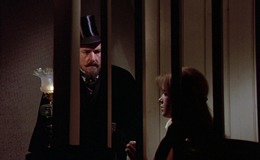 music scores. The violence here is still genuinely startling, with one poor maid getting her throat gouged by a broken mirror and a prostitute's face meeting a fistful of hat pins in two of the most memorable scenes. (One report suggests the mirror murder once existed in a slightly longer form, though this has yet to surface via any TV screenings, circulating prints, or home video releases.) However, in a rarity for Hammer at the time, the film also manages to reach a genuinely haunting and poetic climax at St. Paul's, a tragic conclusion involving not a fiery inferno or outraged villagers but a logical conclusion for the two main characters instead.
music scores. The violence here is still genuinely startling, with one poor maid getting her throat gouged by a broken mirror and a prostitute's face meeting a fistful of hat pins in two of the most memorable scenes. (One report suggests the mirror murder once existed in a slightly longer form, though this has yet to surface via any TV screenings, circulating prints, or home video releases.) However, in a rarity for Hammer at the time, the film also manages to reach a genuinely haunting and poetic climax at St. Paul's, a tragic conclusion involving not a fiery inferno or outraged villagers but a logical conclusion for the two main characters instead. 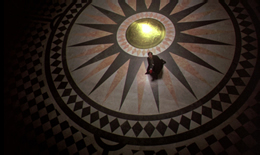 The dual-format Blu-Ray and DVD 2013 release from Synapse is easily the most impressive and a worthy companion to their previous Hammer/Rank releases of Vampire Circus and Twins of Evil. The transfer is (finally!) correctly framed at 1.66:1, with the extra headroom giving the film a more spacious and elegant appearance than before. Those pesky dark scenes are also much more legible, which is especially important given how many shots involve moody shadows punctuated by flickering lights. The DTS-HD MA two-channel mono track sounds excellent as well, with a welcome isolated music and effects track added for good measure only on the Blu-Ray. (A nice touch since this score has never had a commercial release.) Optional English subtitles are also provided.
The dual-format Blu-Ray and DVD 2013 release from Synapse is easily the most impressive and a worthy companion to their previous Hammer/Rank releases of Vampire Circus and Twins of Evil. The transfer is (finally!) correctly framed at 1.66:1, with the extra headroom giving the film a more spacious and elegant appearance than before. Those pesky dark scenes are also much more legible, which is especially important given how many shots involve moody shadows punctuated by flickering lights. The DTS-HD MA two-channel mono track sounds excellent as well, with a welcome isolated music and effects track added for good measure only on the Blu-Ray. (A nice touch since this score has never had a commercial release.) Optional English subtitles are also provided.